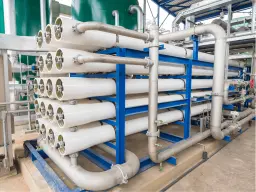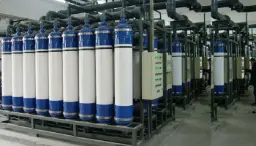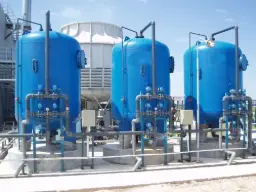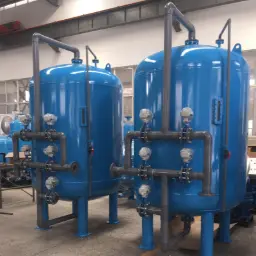Condensate Recovery for Pulp and Paper Industry
Recovering condensate in pulp and paper mills involves capturing the hot, purified steam-‐that has condensed after providing thermal energy to digesters, dryers, and bleaching stations-‐and routing it back to the boiler house instead of discharging it. The practice saves fuel, water, and treatment chemicals while stabilising boiler feedwater chemistry. In essence, Condensate Recovery for Pulp and Paper Industry is an integrated water-energy loop that transforms an apparent waste stream into a valuable resource. Steam generation in these mills is continuous, so even a modest percentage of reuse magnifies resource savings across thousands of operating hours.
Because condensate is virtually free of dissolved solids, its return minimises the blowdown rate, reduces makeup water demand, and lowers demineraliser and softener loading. At the same time, its elevated temperature shortens boiler warm-up periods, improving overall steam-cycle efficiency. Historically, pulp processors let condensate drain into sewer lines due to corrosion fears, oil carry-over, or a lack of automated controls. Modern membrane degassing, high-alloy piping, and real-time monitoring eliminate these hurdles. As sustainability targets tighten and natural-gas prices fluctuate, mills increasingly view condensate recovery as a foundational best practice rather than an optional upgrade. The approach also aligns with corporate greenhouse-gas reduction pledges, earning recognition in environmental audits and customer scorecards.
Related Products for Condensate Recovery
An optimised condensate-return programme for pulp and paper facilities draws upon multiple unit operations to meet purity, temperature, and safety goals. Before listing them, it is useful to recognise that the chosen portfolio must neutralise dissolved oxygen, strip carbon dioxide, remove trace organics originating from process leaks, and guard against microbiological growth in seldom-used return headers. Careful pairing of mechanical filtration with chemical conditioning delivers a robust barrier against fouling and corrosion without jeopardising product quality or regulatory compliance. In addition, digital sensors and supervisory software knit the hardware together, transforming isolated skids into a cohesive water-energy intelligence network that plant personnel can trust during full-load and turndown conditions alike.

Reverse Osmosis
A specialised RO unit capable of 80 °C operation that acts as a final barrier when mills must return condensate from multiple process areas with varying contamination risks.

Ultrafiltration
Removes suspended solids and colloids as a pretreatment step, enhancing downstream performance.

Activated Carbon Filters
Remove trace lubricating oils and resin acids that occasionally bleed from process equipment, safeguarding ion-exchange resins from organic fouling.

Deionization
Exchange trace cations and anions, delivering ultrapure water with conductivity less than 0.1 µS cm⁻¹ to the boiler feed system.
These complementary systems create multilayer protection. Mechanical filters remove bulk solids first, shortening the duty cycle of polishers. Degassing membranes and oxygen scavenger feeds work in tandem, one eliminating physical oxygen, the other mopping up what remains. Activated carbon shields ion exchangers from organic breakthrough, extending resin life. Finally, hot-service RO provides insurance when campaigns or shutdowns introduce unpredictable contaminants. Together they deliver a clear, stable, and hot condensate stream that maximises boiler efficiency, minimises maintenance, and satisfies strict condensate-return conductivity specifications demanded by modern high-pressure recovery boilers.
Key Water-Quality Parameters Monitored
Condensate recovery in pulp and paper operations hinges on continuous tracking of a handful of critical water-quality indicators. Temperature, obviously, affects energy savings but also influences corrosion kinetics, so operators watch both inlet and discharge temperatures of each heat exchanger and flash tank. Conductivity serves as the lead proxy for ionic purity; when it drifts upward engineers suspect leaks from liquor heaters, glycol circuits, or mill utility systems. Dissolved oxygen remains the most feared species, because even a few parts per billion can pit stainless steel and erode pump impellers in hours. Carbon dioxide is equally troublesome, forming carbonic acid that lowers condensate pH and accelerates general corrosion. Organic acids, especially from resin carry-over or black liquor vapours, interfere with ion-exchange resins and catalyse under-deposit attack. Microbial activity is rare at 90 °C, but stagnant headers can incubate thermophilic strains that produce slimes and volatile acids if left unchecked.
Modern mills deploy multivariable transmitters, inline optical sensors, and cloud-connected laboratory analysers to watch these parameters in real time. Predictive dashboards overlay sensor trends on steam flow, boiler firing rate, and paper-machine speed, revealing subtle correlations that manual sampling would miss. For example, a sudden dip in return-line pH during a grade change can signal white-liquor entrainment, prompting valve checks before the polisher spikes. By storing historical data, digital twins simulate what-if scenarios – for instance, how a 3 °C rise in condensate temperature shifts flash-tank flash rates or degassing vacuum demand. The result is a self-learning ecosystem where alarms escalate only when statistically significant deviations occur, preventing nuisance trips and allowing maintenance crews to focus on root-cause elimination rather than firefighting.
| Parameter | Typical Range | Control Method |
|---|---|---|
| Conductivity | < 0.25 µS cm⁻¹ | Mixed-bed polisher regeneration scheduling |
| Dissolved Oxygen | < 10 ppb | Degassing membranes, oxygen scavenger dosing |
| pH | 8.5 – 9.2 | Neutralising amine feed rate adjustment |
| Temperature | 80 – 105 °C | Insulation integrity, flash steam recovery |
| Total Organic Carbon | < 50 ppb | Activated carbon change-out interval |
Design & Implementation Considerations
Designing a condensate-return network for a pulp and paper site demands more than laying stainless-steel pipe and installing a polisher skid. Engineers start by mapping every steam consumer, noting pressure levels, fouling potential, and layout elevations. For instance, paper-machine dryer cans discharge condensate intermittently under high vacuum, while digester flash tanks provide continuous high-temperature flow. Matching these profiles to piping slopes prevents water hammer and eliminates the need for costly flash re-pumping. Material selection is equally nuanced: duplex stainless offers chloride-resistance in bleach plant areas, whereas carbon steel lined with thin polymer may suffice near the power island. Pump selection must account for flashing, net positive suction head, and variable load; variable-speed drives avoid energy waste at low return rates. Instrumentation ports are spaced at strategic distances so that operators can isolate contamination sources quickly rather than shutting down kilometres of line.

Thermal integration is a design art in itself. Engineers often incorporate plate heat exchangers to preheat white water or chip washer showers using condensate before it reaches the deaerator, thereby extracting every joule from the loop. Control valves require cavitation-resistant trims because condensate flashes when pressure drops from 10 bar to near-atmospheric. A robust redundancy philosophy underpins the whole architecture: twin polishers in duty-standby, dual degassing vacuum pumps, and bypass manifolds that allow hot flash steam to vent safely during upset. Cybersecurity cannot be ignored either; integrating return-line PLCs into mill DCS networks necessitates firewalls and read-only historian feeds to thwart external tampering with feedwater chemistry. Finally, commissioning plans include hydro-testing with treated water, gradual temperature ramp-up, and corrosion-coupon insertion so that baseline metal-loss data anchor future maintenance decisions.
Operation & Maintenance
Once installed, a condensate-recovery scheme lives or dies by disciplined daily routines. Operators start each shift by reviewing trend dashboards that flag conductivity drifts beyond 0.1 µS cm⁻¹ per hour. They physically inspect sight glasses on flash tanks, verifying that level-control valves modulate rather than stick open, which would dump hot condensate to sewer. Lubrication points on return pumps receive weekly attention; high-temperature synthetic grease stands up better than mineral oils that oxidise. Mixed-bed polishers rely on resin separation efficiency; technicians backwash, air scour, and re-layer beads to avoid channel formation. Carbon beds are sampled for i-iodine number monthly, correlating breakthrough curves to actual TOC spikes in the line.
Predictive maintenance leverages ultrasonic thickness gauges on elbows and tee joints, plotting corrosion loss over time; when a hot-spot exceeds 50 µm per year, crews schedule line replacement during the next mill shutdown. Membrane-contact degassers are cleaned with caustic-detergent solutions under nitrogen blanketing to remove biofilms without oxidising the hydrophobic fibres. Oxygen-scavenger metering pumps undergo calibration against amperometric probe readings; a two-point slope of 1.0 signifies perfect tracking. Operators also validate deaerator vent rates, because over-venting wastes steam and under-venting traps non-condensables that erode turbine blades. Seasonal boiler-load changes trigger asset-performance reviews; for example, during low summer demand, return-header residence times lengthen, so biocide pulse-feeds prevent thermophilic spores from blooming. The overarching goal is to make condensate recovery invisible to production – a silent efficiency enabler rather than a system needing constant heroics.
Challenges & Solutions
Even well-designed condensate-return networks confront hurdles unique to pulp and paper manufacturing. Resin acids and fatty soaps derived from wood chips can emulsify in steam headers, passing through carbon beds and blinding ion-exchange resins. The solution pairs upstream mechanical skimming with periodic resin-strong-base caustic soaks, re-establishing capacity without full replacement. Another challenge arises when bleaching operations introduce chloride aerosols that condense downstream, raising the risk of stress-corrosion cracking in stainless lines. Installing bleed-in dechlorination skids and selecting duplex alloys mitigate this threat. Sudden black-liquor leaks can spike conductivity to tens of µS cm⁻¹, forcing operators to dump return streams and switch to fresh makeup, but this reaction undermines sustainability gains. Digital contamination-detection algorithms now correlate pH, colour, and oxidation-reduction potential in real time, allowing automated divergence valves to isolate only the affected branch until root-cause repair.
Pressure imbalance is another recurring issue; steam traps fail, causing live steam loss and condensate starvation. Deploying inverted-bucket traps with integral strainers and wireless monitoring catches failures in hours, not weeks. Flash tank vent valves occasionally stick, leading to unacceptable backpressure and pump cavitation. Replacing them with modulating pneumatic valves equipped with smart positioners solves the problem. Finally, mills chasing ever-higher boiler-feed quality sometimes overtreat, raising amine levels beyond condensate pH setpoints and violating discharge permits when blowdown occurs. Adaptive chemical-feed controllers that adjust dosage based on both pH and conductivity, rather than open-loop flow pacing, prevent this costly overcorrection while preserving metal passivation.
Advantages & Disadvantages
Understanding the trade-offs of large-scale condensate recovery gives decision-makers clarity when allocating capital. The most celebrated advantage is energy conservation; every tonne of 95 °C condensate returned saves roughly 30 kg of natural gas compared with heating cold makeup to saturation. Reduced blowdown slashes chemical usage – softeners regenerate less often, antiscalant feed drops, and boiler phosphate demand decreases. Equipment longevity rises because clean, hot condensate contains little oxygen or hardness, cutting down on tube-sheet scaling and under-deposit corrosion. Environmental compliance improves; mills report lower water abstraction and CO₂ emissions, strengthening their licences to operate.
Still, disadvantages exist. Upfront investment in insulated piping, polishers, and controls can be steep, particularly when retrofitting crowded legacy plants. Complex return networks pose contamination risks; a single chemical spill can force boiler shutdowns. Maintenance sophistication increases: membrane contactors and mixed-bed resins require skilled technicians. There is also marginal energy penalty from pressure drops across additional equipment and pumps. Finally, if steam balance fluctuates wildly, condensate flow may exceed deaerator capacity, causing vent steam losses that erode net savings.
| Pros | Cons |
|---|---|
| Significant fuel-savings through heat recovery | High capital cost for piping and treatment skids |
| Lower makeup water and chemical consumption | Greater system complexity and operator training needs |
| Reduced boiler blowdown and extended asset life | Risk of contamination leading to boiler trips |
| Enhanced sustainability metrics and CO₂ reduction | Potential deaerator capacity constraints |
| Compliance with demanding customer sustainability audits | Additional parasitic pumping energy |
Frequently Asked Questions
Efficient condensate recovery commands curiosity from plant engineers, procurement teams, and sustainability officers alike. Conversational answers to common queries build confidence and accelerate project buy-in, so maintaining an accessible knowledge base is vital. The questions below reflect the most frequent search queries logged in pulp and paper industry forums, RFQ documents, and regulatory guidance notes. Each response distils practical field experience, vendor best practices, and independent research, offering a balanced perspective that avoids sales hyperbole. By anticipating these inquiries, mill owners can shorten scoping cycles, align stakeholder expectations, and reduce costly specification revisions during detailed design. Furthermore, FAQ transparency signals maturity and due diligence to investors and lenders evaluating mill modernisation budgets. The ultimate aim is not merely to close knowledge gaps but to spark deeper discussion about integrating water-energy optimisation into core business strategy.
Q1: What payback period can pulp and paper mills expect from condensate recovery projects?
Most mills report simple payback between 18 and 36 months, depending on natural-gas pricing, condensate temperature, and baseline blowdown rates.
Q2: How clean must condensate be before reusing it as boiler feedwater?
Industry consensus targets conductivity below 0.25 µS cm⁻¹, dissolved oxygen under 10 ppb, and no visible oil sheen; meeting these ensures protection for high-pressure recovery boilers.
Q3: Can condensate recovery work with existing carbon-steel piping?
Yes, provided corrosion rates are monitored. However, areas near bleach plants or acid flash tanks benefit from stainless upgrades during outages.
Q4: What controls prevent contaminated condensate from entering the boiler?
Dual conductivity meters with voting logic, colourimetric TOC sensors, and automatic diverter valves isolate suspect streams within seconds, safeguarding steam purity.
Q5: How does condensate-return integration affect boiler chemistries, especially amine dosage?
Return systems lower blowdown, so amine concentrations may accumulate. Adaptive dosing controls that track both pH and residual amine prevent overfeed.
Q6: Are membrane contactors cost-effective compared with traditional deaerators?
For partial return loops or debottlenecking retrofit projects, membrane contactors often deliver lower installed cost and easier modular expansion than large deaerators.
Q7: What role do digital twins play in optimising condensate recovery?
They simulate dynamic process scenarios, predict fouling or corrosion, and recommend proactive maintenance, thereby sustaining savings beyond initial startup.
Q8: How does condensate recovery contribute to ISO 50001 energy-management certification?
By quantifying heat-reuse metrics and documenting continuous improvement, condensate projects provide clear evidence that mills meet the standard’s performance criteria.
Q9: Can hot-condensate RO units operate safely at 80 °C?
Specialised thermally stable membranes and stainless housings have proven reliable for years in pulp mills, provided permeate back-pressure is carefully controlled.
Q10: What emergency procedures should operators follow if conductivity suddenly spikes?
Immediately divert the return line to drain, switch boiler makeup to treated fresh water, verify trap integrity, and inspect nearby process heat-exchangers for leaks.